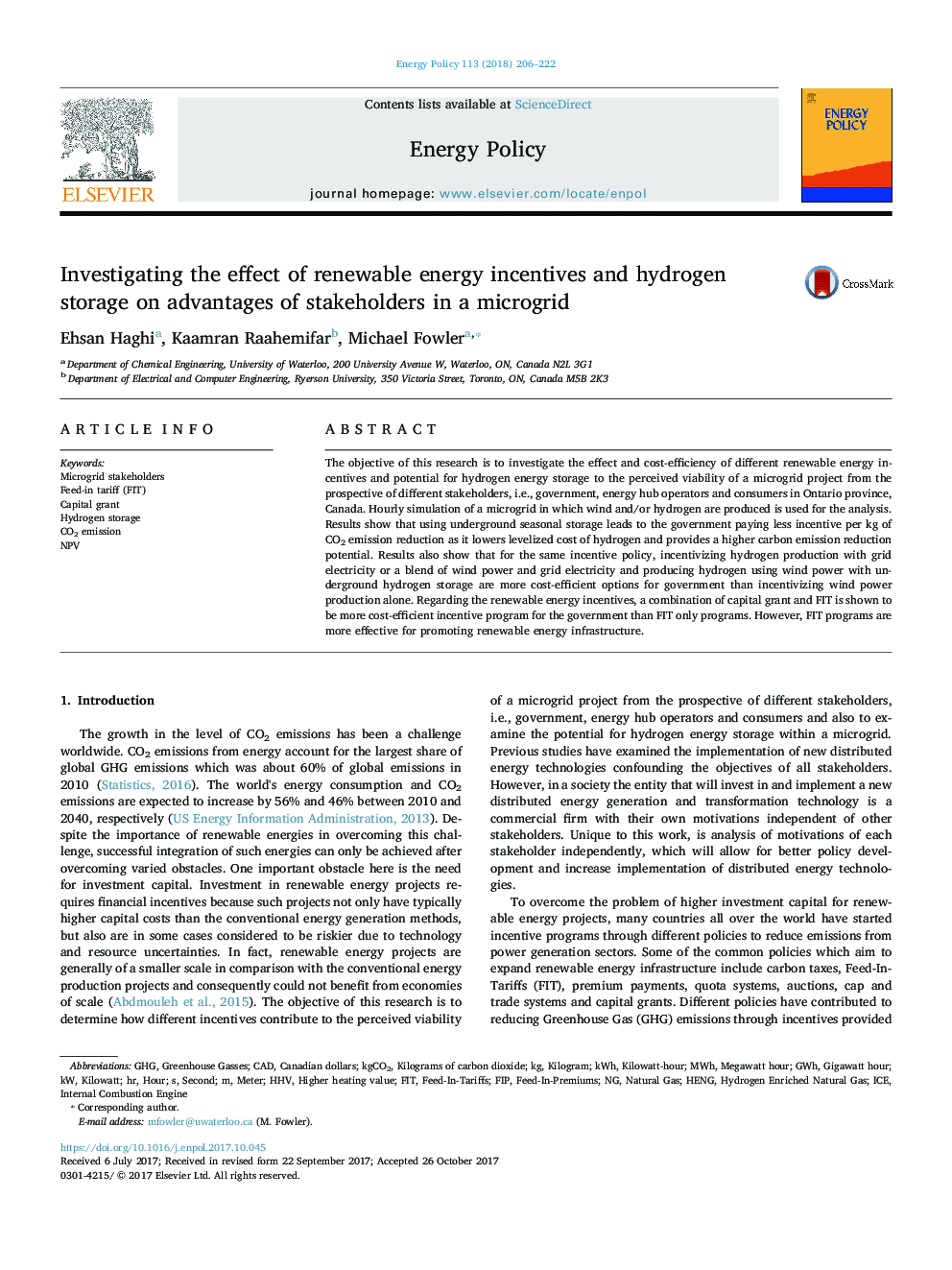| Article ID | Journal | Published Year | Pages | File Type |
|---|---|---|---|---|
| 7398092 | Energy Policy | 2018 | 17 Pages |
Abstract
The objective of this research is to investigate the effect and cost-efficiency of different renewable energy incentives and potential for hydrogen energy storage to the perceived viability of a microgrid project from the prospective of different stakeholders, i.e., government, energy hub operators and consumers in Ontario province, Canada. Hourly simulation of a microgrid in which wind and/or hydrogen are produced is used for the analysis. Results show that using underground seasonal storage leads to the government paying less incentive per kg of CO2 emission reduction as it lowers levelized cost of hydrogen and provides a higher carbon emission reduction potential. Results also show that for the same incentive policy, incentivizing hydrogen production with grid electricity or a blend of wind power and grid electricity and producing hydrogen using wind power with underground hydrogen storage are more cost-efficient options for government than incentivizing wind power production alone. Regarding the renewable energy incentives, a combination of capital grant and FIT is shown to be more cost-efficient incentive program for the government than FIT only programs. However, FIT programs are more effective for promoting renewable energy infrastructure.
Keywords
Related Topics
Physical Sciences and Engineering
Energy
Energy Engineering and Power Technology
Authors
Ehsan Haghi, Kaamran Raahemifar, Michael Fowler,
